In times of grief, we often turn to symbols that offer solace and meaning.
When words aren’t enough, angel headstones and angel statues offer a meaningful way to honor and remember our loved ones who have passed on. These ethereal beings have captured our imaginations for centuries and their symbolism can be found in art, literature and religious texts from around the world.
In this post, we explore the fascinating history and significance of angel headstones and statues. From their humble beginnings to their enduring popularity today, these heavenly guardians have inspired us to seek solace and comfort in the face of loss.
What Does An Angel Statue Symbolize?
Angels serve as a bridge between the earthly realm and the divine—embodying strength, faith, protection and beauty. They offer peace to those who mourn, comforting them with the assurance that their loved ones are watched over in eternity.
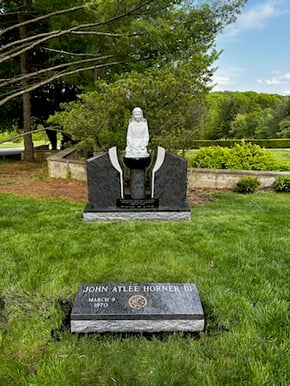
Throughout history, angels have been recognized for their ethereal presence and their close association with the divine. While different religions may have their own interpretations of angels, these heavenly beings are often depicted as spiritual guardians, offering comfort and guidance to those who seek their protection.
Incorporating an angel figure into a memorial can hold a deeply personal meaning for each individual, offering a sense of connection to their loved one who has passed on.
If you've encountered an angel monument before, you may have noticed the different positions these figures can take. Each pose carries its own unique symbolism:
An angel headstone praying in cemeteries can signify a devotion to God.
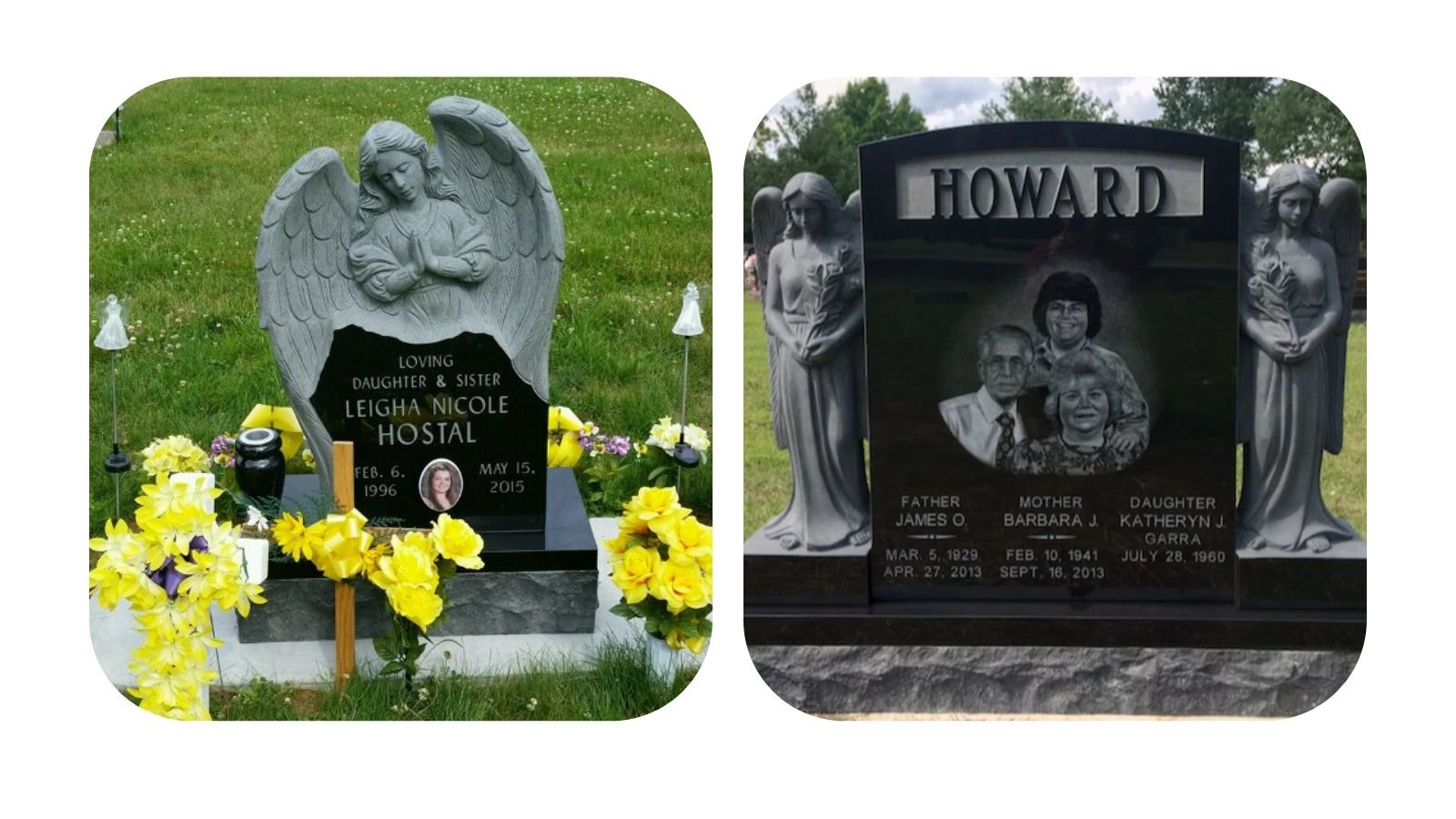
An angel statue pointing upwards represent guiding the soul to heaven. 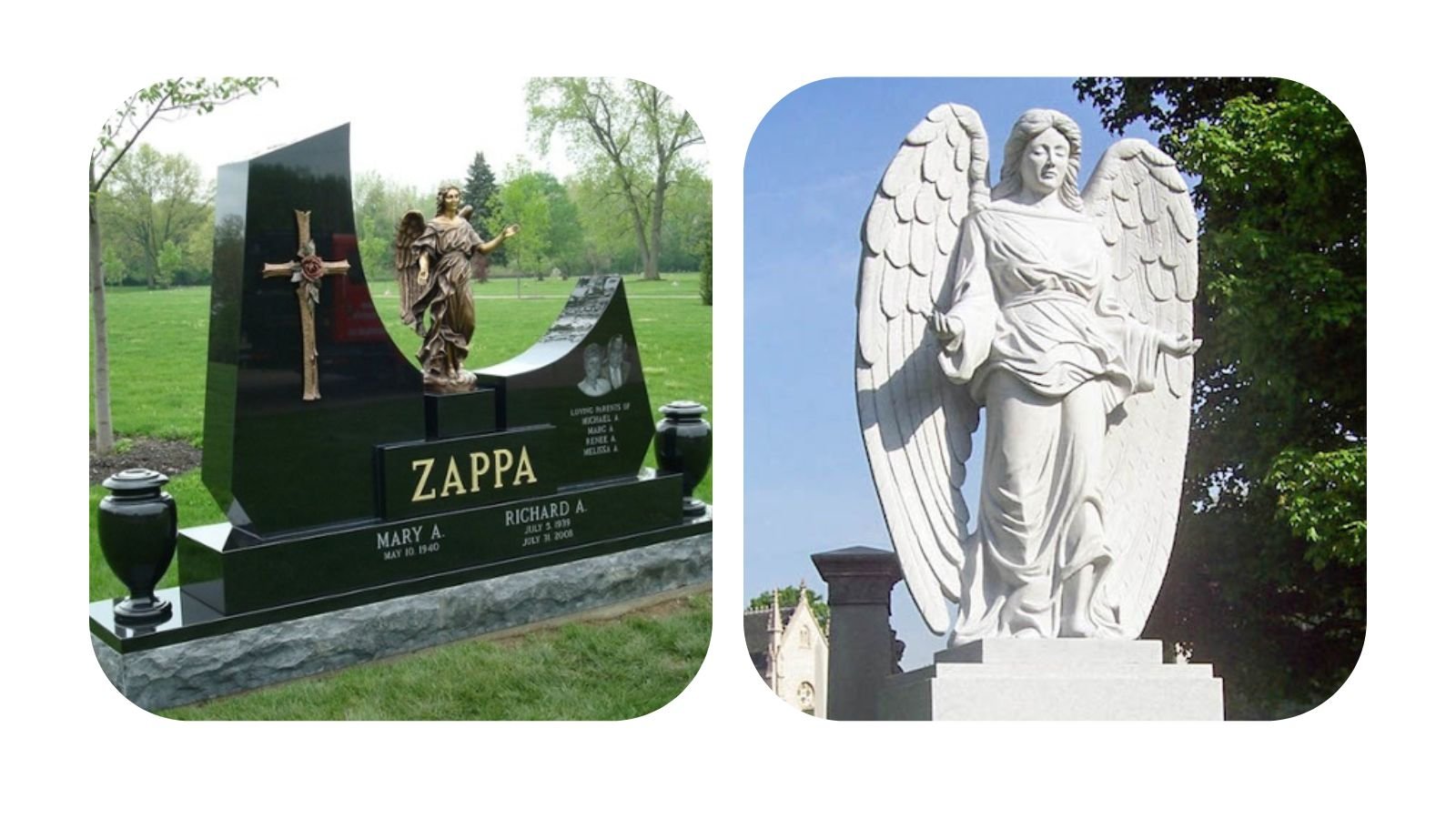
An angel memorial with its heads bowed may symbolize grief, sometimes when mourning a sudden or unexpected death. 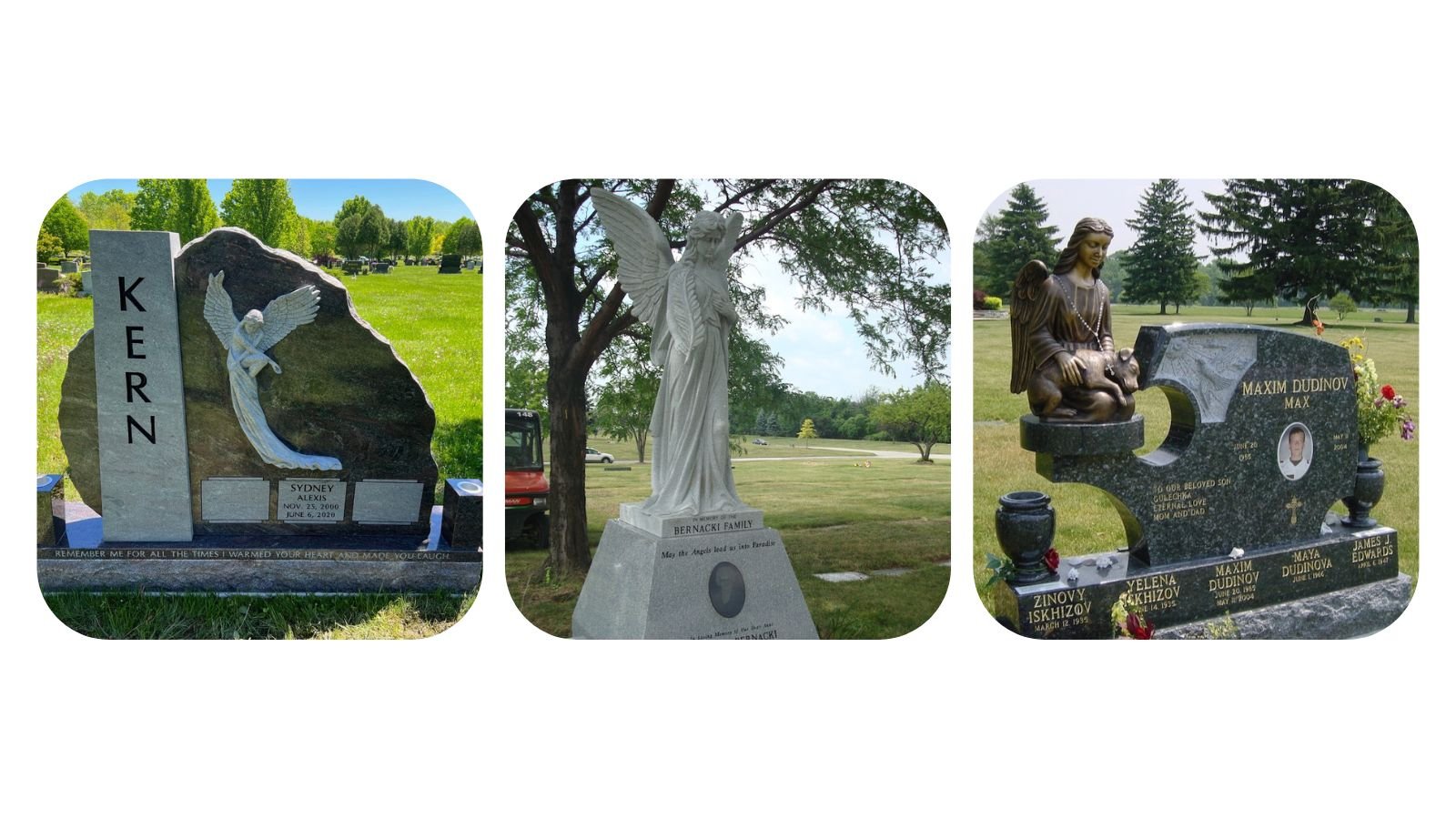
A crying angel statue represents grief over a loved one. 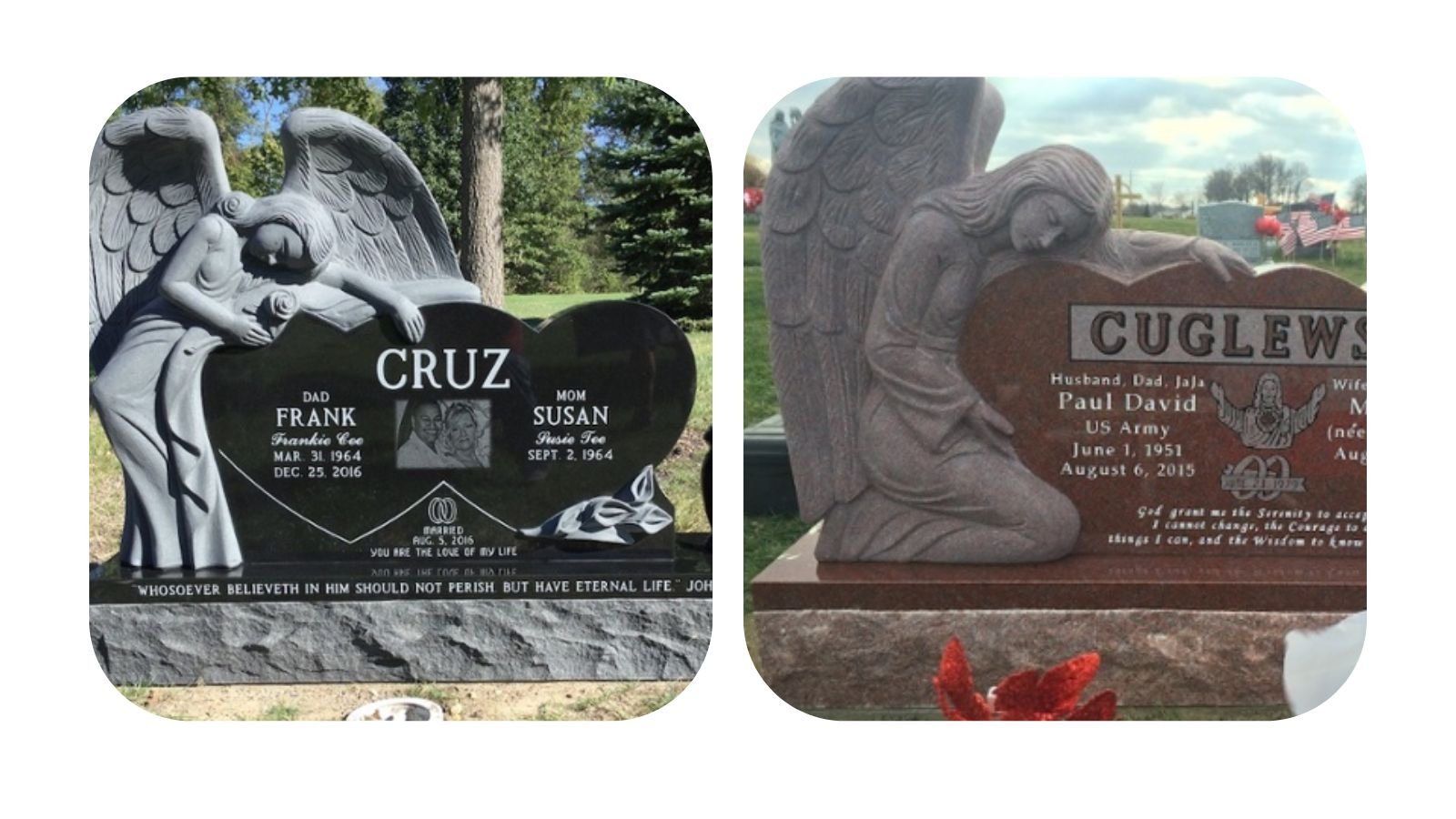
How Angel Statues Are Made and Placed
When choosing a material for an angel statue, the two most common options are granite and bronze, which are typically permitted by most cemeteries.
Granite is the most widely used material for memorials, with a wide range of colors and patterns available. An angel statue made of granite can be created separately and attached to the headstone, or it can be carved into the same piece of granite, resulting in a seamless and elegant design. 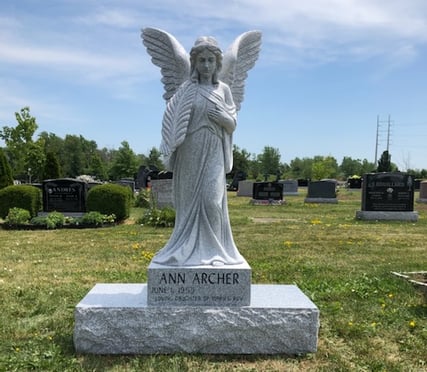
Bronze memorials are often mounted on a granite or cement base in accordance with cemetery regulations. In this case, the headstone is typically made of granite, with a bronze angel statue attached to the top.

Whether you choose granite or bronze, a separate statue or a carved design, incorporating an angel figure into your memorial can be a touching tribute to your loved one. It provides a visual reminder of their spiritual connection and serves as a symbol of their enduring presence in your life.
Angel Headstone Maintenance and Restoration
Proper care and maintenance of angel headstones is essential to preserve their beauty and ensure their longevity. By following these tips on cleaning and restoration, you can help protect these delicate artworks for future generations to appreciate.
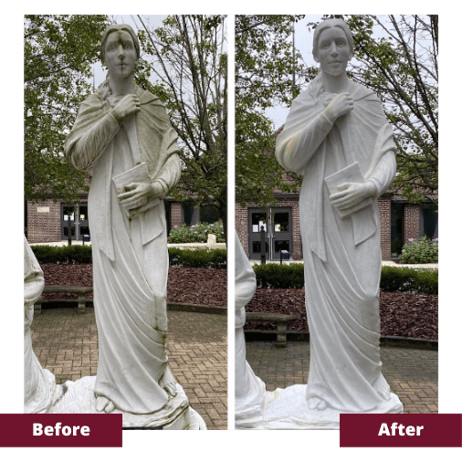
Granite Statue Cleaning Tips
Regular cleaning can prevent the buildup of dirt, debris and biological growth on all types of natural stone. Here are some cleaning techniques to consider:
- Use a soft-bristle brush or non-abrasive cloth. Gently scrub the surface of the angel headstone using a soft-bristle brush or non-abrasive cloth. Avoid using harsh chemicals or abrasive materials that may damage the stone or its finish.
- Mild detergent or specialized stone cleaner. Prepare a solution of mild detergent or a specialized stone cleaner mixed with water. Apply and rinse thoroughly with water afterward to remove any residue.
- Avoid high-pressure washing. Refrain from using high-pressure washing methods as they can erode the delicate features and detailing of the angel sculpture.
Granite Statue Restoration Tips
Over time, natural stone may require restoration to revive its original beauty. Here are some restoration tips to consider:
- Professional assessment. Seek the expertise of a restoration specialist who can assess the condition of the stone and provide recommendations.
- Cleaning and repair. Restorative processes may involve gentle cleaning to remove stains or biological growth, as well as repairing any structural damage, such as cracks or chips. Stoneworking experts can match the original design and materials to ensure a seamless restoration.
- Bronze maintenance. When bronze is outside and affected by the elements, specific maintenance is necessary. Regularly clean the bronze surfaces using mild soap and water, and apply a protective wax coating to prevent oxidation and maintain its luster.
>>> Related Resource: 5 Signs It's Time to Restore Your Memorial or Monument
Explore Endless Possibilities for Meaningful Memorials
When it comes to memorializing a loved one, the possibilities are limitless. By exploring your options, you can design a memorial that is as unique and unforgettable as the person it honors. And our headstone design guide can help you do just that. Click below to download your free copy.





